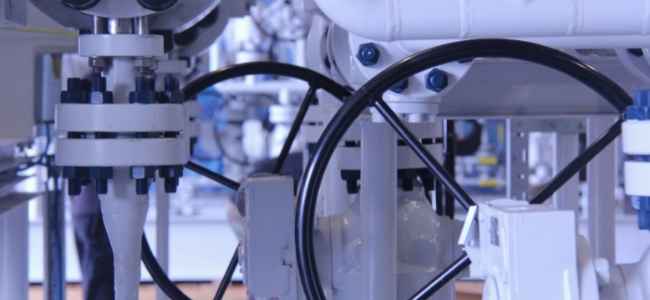Flange spreading devices (also known as flange splitters or flange dividers) are essential for the on-site engineer’s flange repair toolkit. This industrial equipment comes in various forms and is intended to aid in the splitting of pipe flange connections, as the name implies. Pipeline construction, commissioning, normal upkeep, and the replacement of valves or pumps are all examples of typical tasks.
Flange Spreader Types
Expandable wedges, expanding collets, and Mini-gap flange spreaders with a set size wedge are three dominant varieties. Expanding wedges come either a hydraulic cylinder or perhaps a mechanically powered system. Exclusively mechanically operated mechanisms are used in the expanding collet and mini-gap variants.
What are flange spreaders, and how do they work?
The facts given here are only meant to give you a general idea of how the goods are used. Only people who have been certified as competent in the operation of hydraulic gear should use these devices, as you might assume. The manufacturer’s operating instructions must be correctly adhered to.
Wedge Type of Flange Spreader
Before mounting the flange spreader, make sure at least 2 flange bolts are in place and the nuts are loosened enough to allow flange operation. Having left them in place will assist in avoiding existing gaskets from falling underneath and limit undesirable lateral flange movement throughout flange widening. You can find this type in many flange spreader factories.
- Specify where the tools should be positioned from around the joint. A minimum of 3 flange spreaders should be utilized at all times. Lanyards are given to keep these from falling.
- Assess the flange accessibility gap to establish which flange spreader is required.
- Put the spreader device in the access space, fully implanted up to the heel, with the entire span of the desired step.
- Actuate the instrument to spread the flanges away.
- Safety Blocks could be put into the flange joint once the joint has been raised to the necessary extent.
- Before progressively withdrawing the tool until the flange load has been given on them, make sure the whole width of the specified Safety Block level is fully inserted.
Expanding Collet type of Flange Spreader
A flange spreading device with a collet is one option if the flange joint has no accessibility space between the flanges or if you’re worried about injuring the flange faces. The spreader is secured using two flange bolt holes in this equipment.
- To establish the collet size needed, examine the bolt holes. It’s critical to choose the correct collet type. If you use a too small collet, the collet holder may pull through the opening. A clogged collet is a possibility with a large collet.
- The right collet should be inserted into the equipment. Collets are considered consumables and must be replaced regularly.
- The equipment should be used in couples, and two bolts should be loosely secured in place, just like the wedge spreader.
- The device’s two parts are put into the bolt holes. It’s essential to ensure that collets are only connected with one flange. The collets can be strengthened after they are correctly connected.
- The cantilever and actuator are then pulled into place and secured in place.
- A torque wrench is used to tighten the actuator.
- Safety barriers can be placed after the flanges have been parted.
Mini Gap Flange Spreader
With a minimal accessibility gap of 2.0mm (0.08′′), the Equalizer device is employed on more minor, lower-pressure flange connections.
- Select the appropriate configuration for the size and kind of flange joint you’re separating.
- It is highly urged that two tools be used on the flange joint, placed 180 degrees away, as with previous versions.
- Only the right flange dimension will fit the spreading rods. There are no 2 spreading bars that will fit into the same stud slot.
- Position the device with the appropriate stud hole over the flange junction.
- Insert the spreader bar into the tool’s leg and the flange stud socket.
- Ensure the spreading rod is positioned correctly through the device’s second leg. Make sure the wedge is centred between the flange sides.
- Each opposing instrument should be turned half a turn until the necessary gap is reached. It’s essential to make sure the force is distributed equally.
Conclusion
This industrial equipment comes in various forms and is intended to aid in the splitting of pipe flange joints, as the name implies. Pipeline construction, installation, routine maintenance, and the replacement of valves or pumps are all examples of typical tasks that are carried in which flange spreaders are used. This article outlines the types of Flange spreaders and how they are typically used. Therefore, if you are a new engineer, this guide will help you know more about flange spreader tools.

